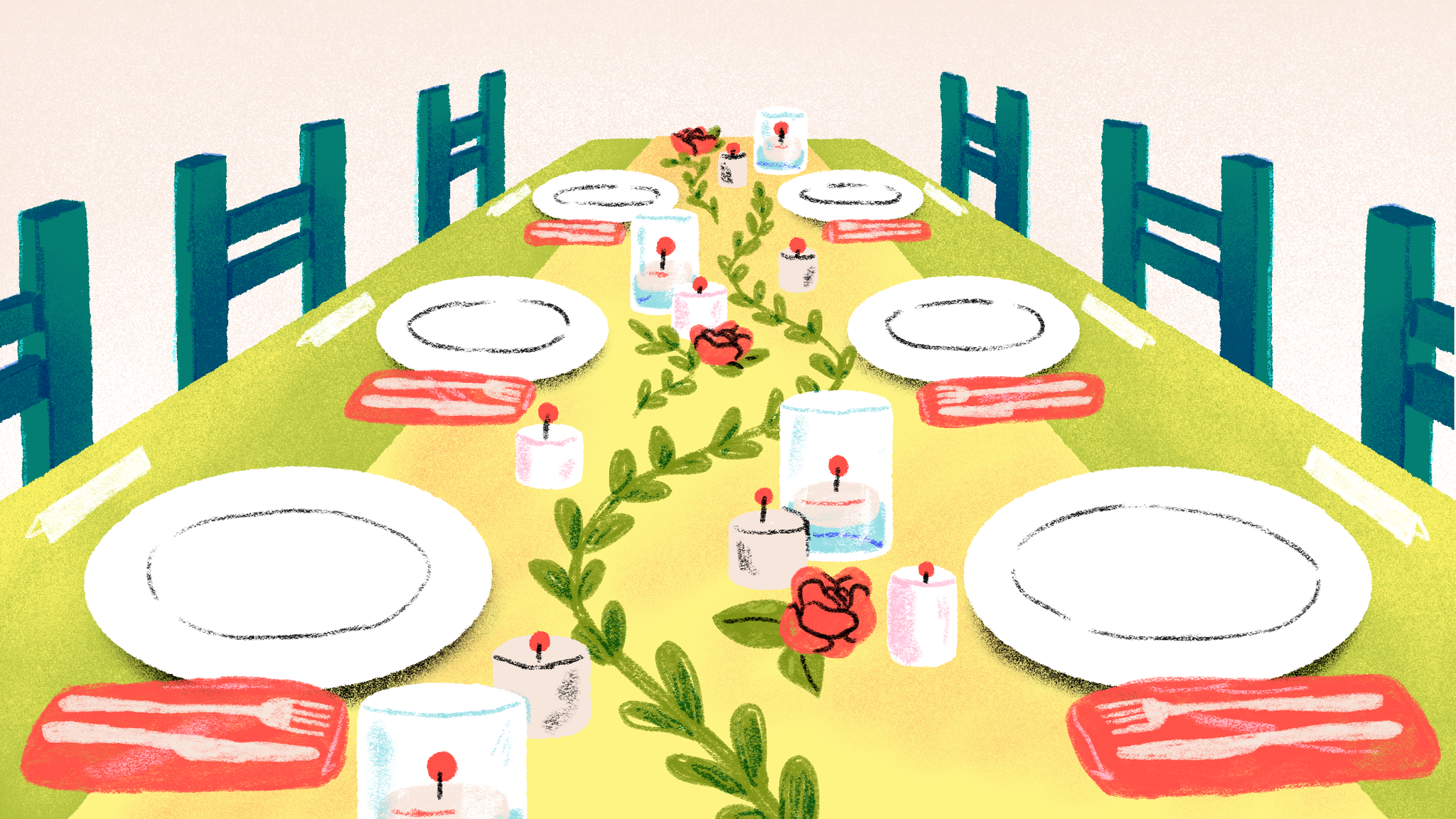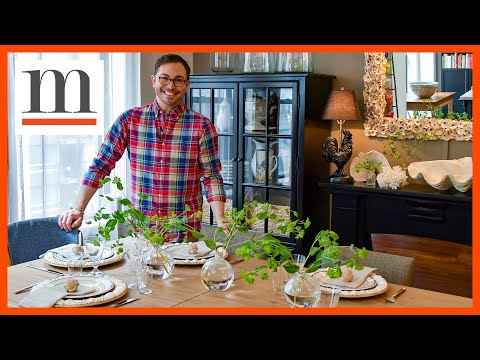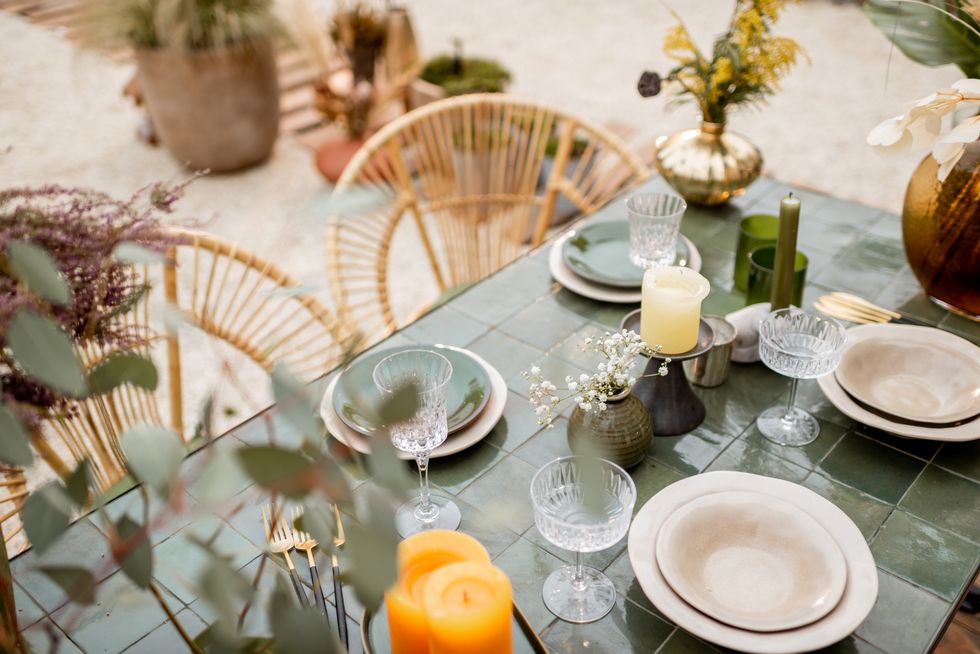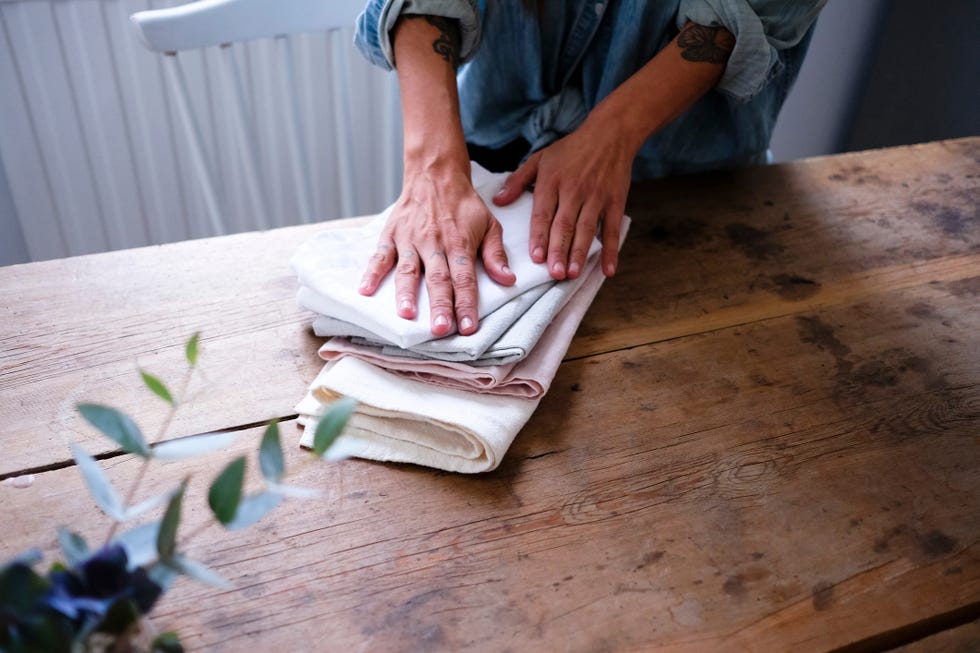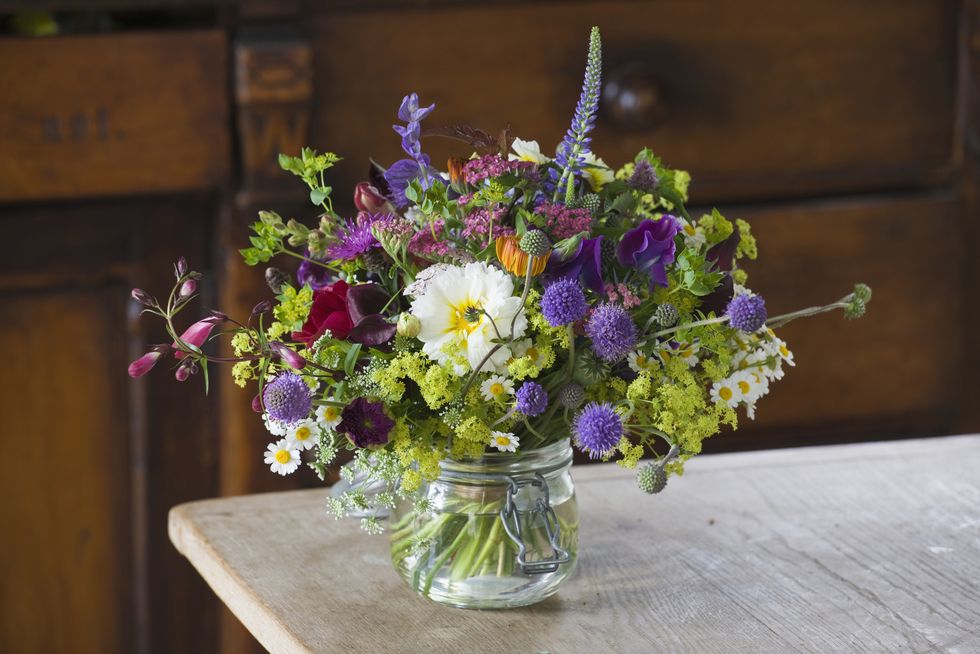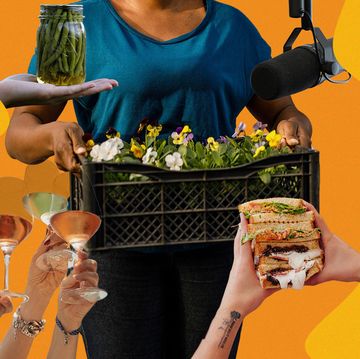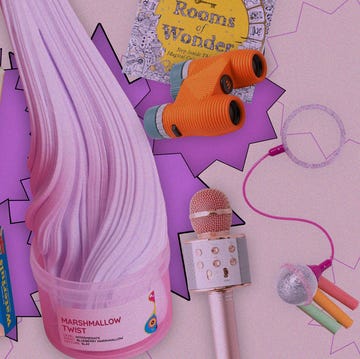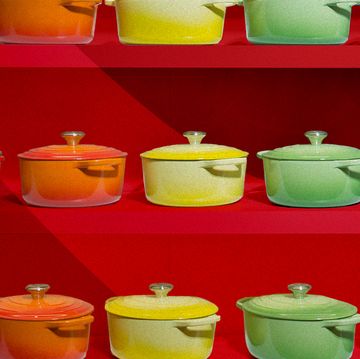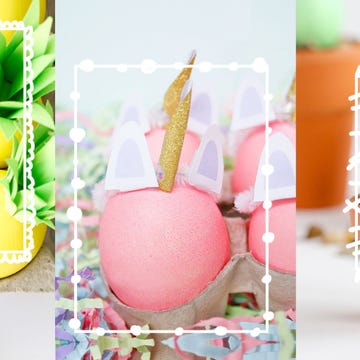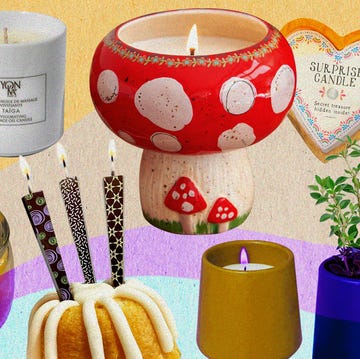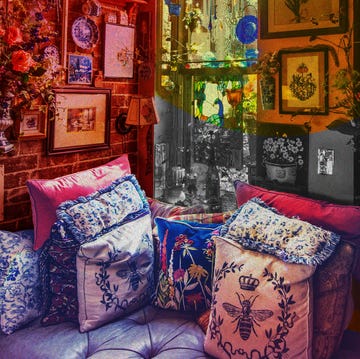Sometimes the best salve for the soul is gathering with our favorite people. A magical way to connect with others is through celebration, and Shondaland’s Let’s Party! Summer Fun, Food, and Beverages series is your personal guide to creatively entertaining and communing this season. Cheers!
If there ever was a chance to leave your heart on the table, it’s with tablescaping. The art of creatively decking out a dining space can often lead to memories that leave a larger impression than the dishes or drinks that were served.
“Sometimes, it really scares people,” notes cookbook author, entertaining expert, and creative stylist Marc J. Sievers. “It conjures up images of towering floral arrangements, gleaming silver, and layers of the finest china.” While those elements are certainly an option, tablescapes can also be based on anxiety-free, stunningly simple designs.
Megan Rizk, co-founder and designer at Treasure Valley Picnic Co., says that tablescapes create an experience and allow guests to have a beautiful recollection of a stellar meal, gathering, or other culinary moment. “You are making memories with friends and family,” she says, “and you’re giving them something to be excited about and enjoy their time — more than just sitting down and eating.”
Tablescaping is an opportunity to creatively showcase your personal style. “[It’s] really about using all the things — textures and colors — that you love,” Sievers says. “There is no right or wrong.” That means you don’t have to buy a $200 table runner from a high-end housewares store. Tablescaping is a great excuse to explore local flea markets or browse eBay, which Sievers finds himself doing from time to time. The best part? You can create art with what you already have at home. All the tools are often already inside of you and your home.
Whether it’s a birthday, graduation, holiday, or even a fancy date night, tablescaping can be a creative outlet that makes communing more impressionable. “When people walk in and see a beautifully set table with flowers and some candles and beautiful napkins,” Sievers says, “it always makes people feel like you thought about this ahead of time.” Here are some basics to start tablescaping this summer.
Consider your location
Where and when you decide to have your meal will influence many factors when it comes to your tablescape. “Our vibe changes drastically indoors and outdoors,” Rizk says, “so if you know where you’re going to be having your event, that is a good place to start.” If your dining room is painted red, for example, it might not be the ideal spot for hosting your best friend’s baby shower brunch featuring pastel colors, but it could be great for your next holiday dinner. Also, check the weather. Paper products probably won’t hold up if the forecast anticipates any raindrops.
Choose a color scheme
Whether it’s a girls’ night in or a family member’s bridal shower, one of the most challenging aspects of tablescaping is the sheer amount of options. There’s a remedy to stressing over all of those choices. “The best thing to do is stick to a really tight color palette,” Sievers says. Choose no more than two or three colors, and go from there.
“We always start with color concepts, what food is going to be involved, and the overall vibe of the ambience,” Rizk says. For visual inspiration, look at #tablescaping hashtags on social media, or do an image search based on your chosen theme or color scheme. Looking at other tablescapes will motivate you to create your own.
Begin with placement
If you’ve never put together a tablescape before and are feeling nervous about where to begin, start with the standard placement of tableware, Sievers advises. “Once you follow the format and the guideline of where things go on a table,” he says, “the rest of it is just being creative and really owning your inner fabulousness.”
Whether you choose a casual table setting or want to dress to the nines with your friends for a formal dinner, starting with the arrangement will help even if you haven’t determined a larger design. “It’s a way to make people feel comfortable,” Sievers says, “because they know to use flatware from the outside in, and they’re not guessing.”
Give yourself room
Next, focus on what goes smack dab in the middle of the table. Whether it’s a bouquet of flowers or a specific decorative object, savvy tablescapers always build around what’s at the center of the table. (If you have a charcuterie board for grazing, for instance, Rizk says it should be positioned in the middle for easy access.)
“Start first with your centerpiece, or whatever’s going on the inside of the table, and work your way out,” Rizk says. Whatever you do, to avoid glasses tipping over and elbow bumping, make sure you don’t overcrowd the table.
Plates
Sievers recommends always starting with a white or light-cream dinner plate. “Food is always going to look best on a white dinner plate,” he says, “and [then] you can bring in a theme.” If you are a collector of mismatched dishes or china, this is the time to shine.
The best way to bring in your theme or mood is by way of salad plates, Sievers says. “Salad plates are a little bit smaller, they tend to be less expensive, and you can find them in all kinds of different styles and themes.”
As long as you have the base of that white or cream dinner plate, you can add a pop of color or a touch of the theme by plopping them right on top of your dinner plates for some added personality. Sievers also encourages first-time designers to embrace imperfection, whether it’s a tiny chip in a dish or baby crack on a teacup. “It makes it fresh, keeps it interesting, and doesn’t feel so precious.”
Linens
When it comes to tablecloths, napkins, and table runners — similarly to plates — plain options are a great place to start. “I have hundreds of linens,” Sievers says, “but the ones that I reach for the most are the more plain designs because I can build on those.” By keeping it clean, you’ll have visual space to dress up your design.
While napkins may seem like an insignificant detail, they have the ability to take your table to the next level. “Napkins add another texture to your tablescape,” Sievers says. “If you only have space to store one set of napkins, get really good white linen napkins because you could always dress [them] up with ribbons, napkin rings, or even simple kitchen cotton twine with a little piece of fresh rosemary or thyme tucked underneath it.”
For example, if your dream summer dinner party is a bohemian beach theme in your backyard, fish-shaped dinner plates might be too specific and bulky to store, but napkin rings with shells could be just the right amount of oceanic atmosphere.
Flowers
Florals bring a lively, earthy element to any and every table, no matter the theme. You don’t need to spend hours bringing a giant floral arrangement to life. One or two market-bought bouquets — or 10 to 15 stems — can go a long way and visually multiply when spread out. “I always mix one, three, or five stems per vessel,” Sievers says. “I keep them in odd numbers. I don’t know why it looks good, but it just does.”
Your vessels don’t need to be large or traditional. Grab tiny juice glasses from the back of the cabinet, repurpose stylish coffee cans or soda bottles, or even break out some teacups for a more elegant touch. “Anything that can hold water can be a vase,” Sievers says. When your flowers are in their chosen container and good to go, don’t be shy about moving them around to see how and where they fit best on the tabletop. Try one at each person’s place setting, or place them in little groupings.”
Be mindful of height. Sievers says they should be no taller than the base of your wrist when you put your elbow on the table. “If you love the people at your dinner party or brunch, you really want to be able to see their face and enjoy them,” he says.
Pro tip: If you don’t have the budget for flowers or want to create something more sustainable, colorful paper flowers are a fun craft and can be just as beautiful. After a nice floral touch, you can add other décor if there’s space, such as unscented votive candles or place cards. “It makes people feel very invited and cozy,” Sievers says.
Three Tips for a Fabulous Tablescape
Utilize the unexpected
A memorable evening does not automatically equate to an overly grandiose or expensive one. It’s often the smallest, most unique touches that make a tablescape more personal and interesting — and can even serve as a talking point for the evening.
Rather than making place cards with guests’ names, you can use photos instead. “If you’re setting the table for your best friend’s birthday,” Sievers says, “you could go with nice, demure photos, or you could go with that secret camera roll we all have of our BFFs doing foolish things.” You don’t need to open your wallet or splurge for a spectacular table setting. Be playful.
Prepare ahead of time
We’ve all been there: showing up for a dinner party at someone’s house and the candles aren’t lit, the music hasn’t started, and the host is running around in the kitchen. Sievers suggests avoiding this all-too-familiar frantic feeling by setting the table the night before. Bonus: If you buy flowers one or two days ahead of time, the closed buds will have time to open up and will look (and smell) stunning when your guests arrive.
Don’t go overboard
Sievers says the biggest mistake first-time tablescapers make is doing everything at once. “Where people go a little sideways is trying to have every single element be part of a theme,” he says. “You don’t actually see the theme because there’s so much happening.”
If you’re putting together a tablescape for a sophisticated Fourth of July dinner, for instance, wave off the temptation to have everything garishly covered in red, white, and blue. Instead, independently sprinkle in subtle elements of a patriotic theme rather than going to the extreme. In the end, simplicity wins.
Mia Brabham is a staff writer at Shondaland. Follow her on Twitter at @hotmessmia.
Get Shondaland directly in your inbox: SUBSCRIBE TODAY
